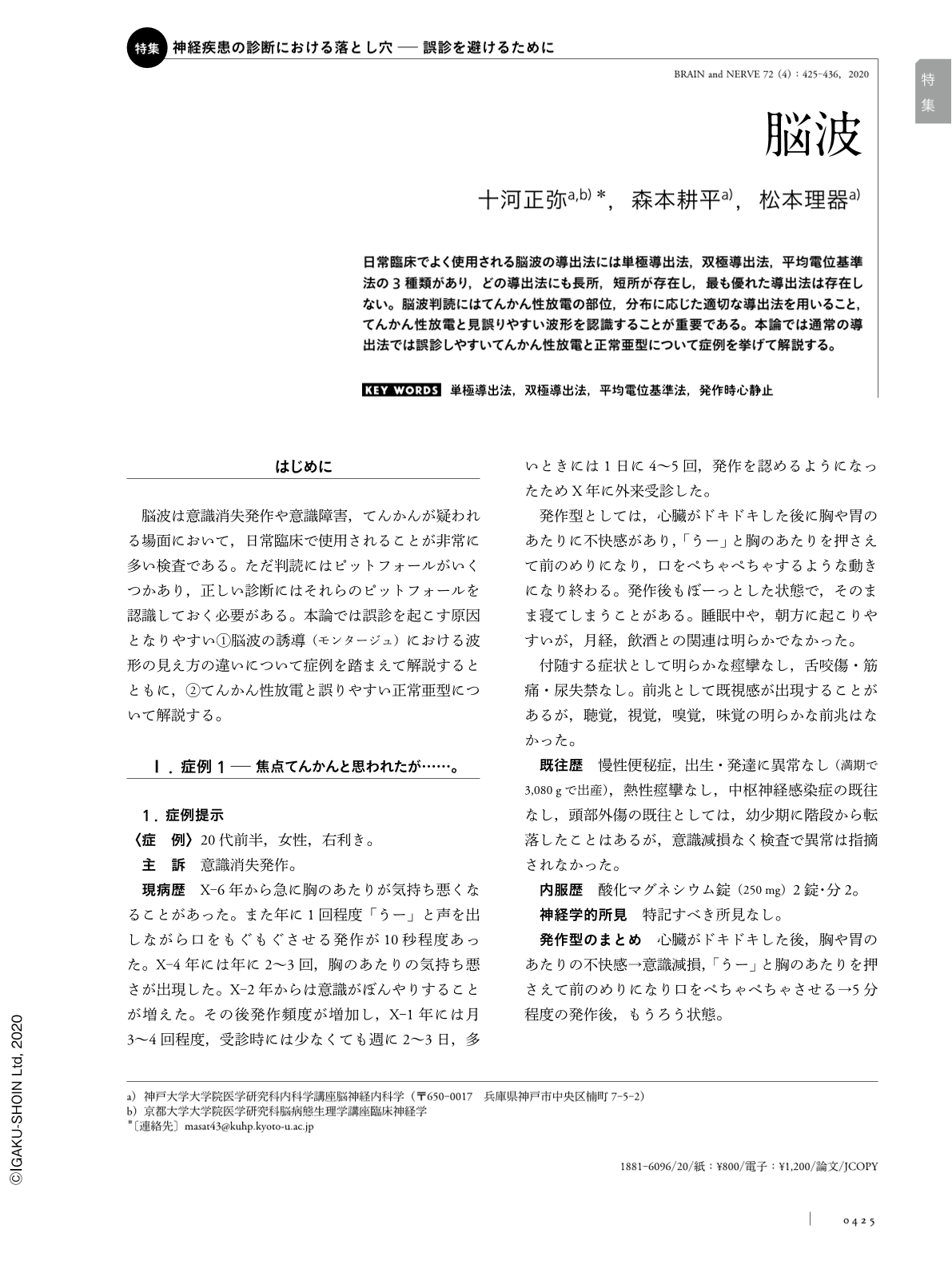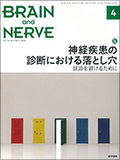Japanese
English
- 有料閲覧
- Abstract 文献概要
- 1ページ目 Look Inside
- 参考文献 Reference
日常臨床でよく使用される脳波の導出法には単極導出法,双極導出法,平均電位基準法の3種類があり,どの導出法にも長所,短所が存在し,最も優れた導出法は存在しない。脳波判読にはてんかん性放電の部位,分布に応じた適切な導出法を用いること,てんかん性放電と見誤りやすい波形を認識することが重要である。本論では通常の導出法では誤診しやすいてんかん性放電と正常亜型について症例を挙げて解説する。
Abstract
Electroencephalogram (EEG) reading in clinical settings commonly uses three montage types: referential montage, bipolar montage, and average montage. Since each montage type has its advantages and disadvantages, there is no single best montage. To correctly read EEG, it is essential 1) to use the montage appropriate for the focus and distribution of epileptic activity and 2) to correctly recognize EEG waveforms that are often misdiagnosed as epileptic activity. In this article, we present the so-called “southern-hemisphere” epileptic activity, which is recognized as challenging to diagnose, along with two cases of temporal lobe epilepsy. Case 1 exhibited seizures that started with palpitations and epigastric discomfort, followed by loss of awareness and oral automatisms. Case 2 experienced recurrent episodes of syncope and was diagnosed with temporal lobe epilepsy based on EEG findings and the observed improvement with anti-epileptic medication. In both cases, the longitudinal bipolar montage (“double-banana montage”) failed to visualize the epileptic activity, while the referential montages (ear lobe reference or average reference) clearly showed maximal activity at the earlobe electrode. Additionally, we present the normal variants of normal EEG waveforms that are often misdiagnosed as epileptic activity.

Copyright © 2020, Igaku-Shoin Ltd. All rights reserved.


